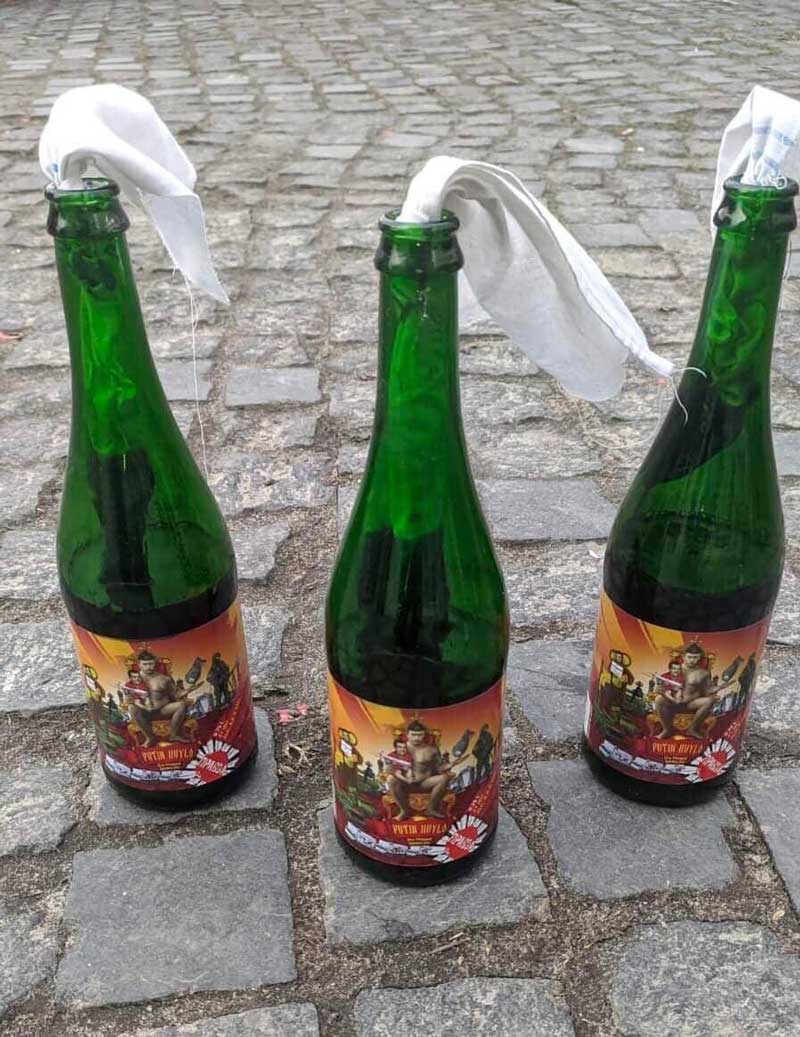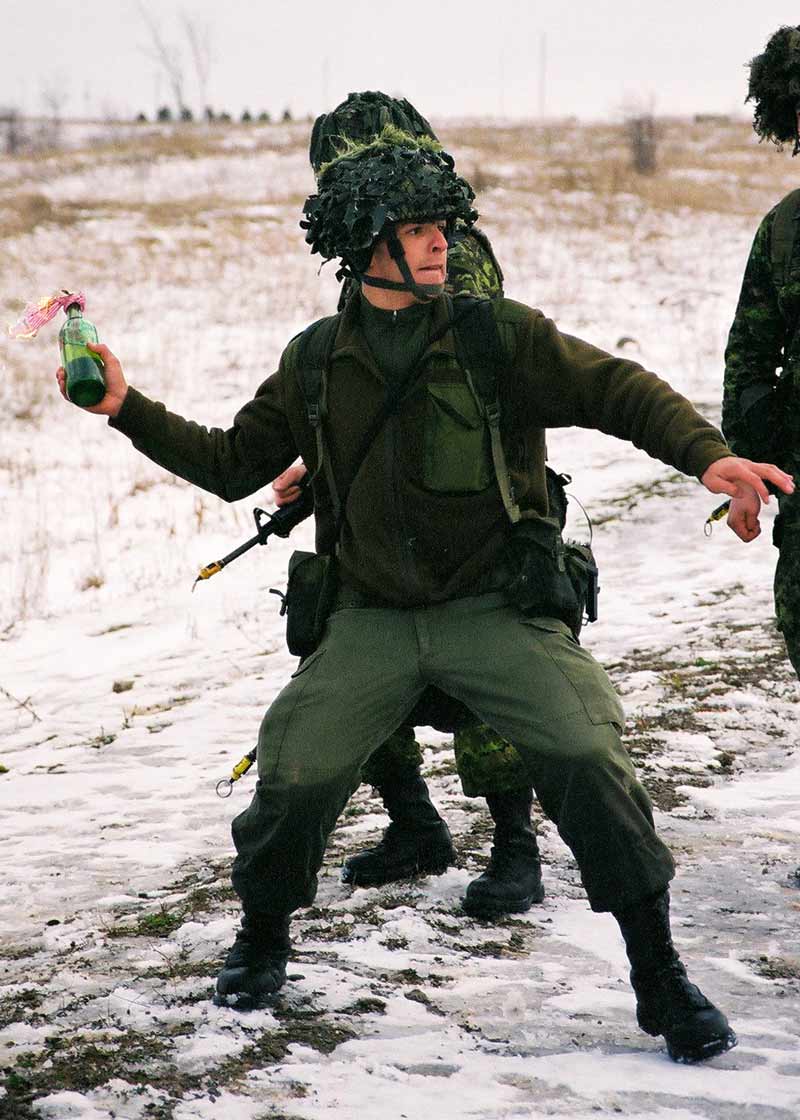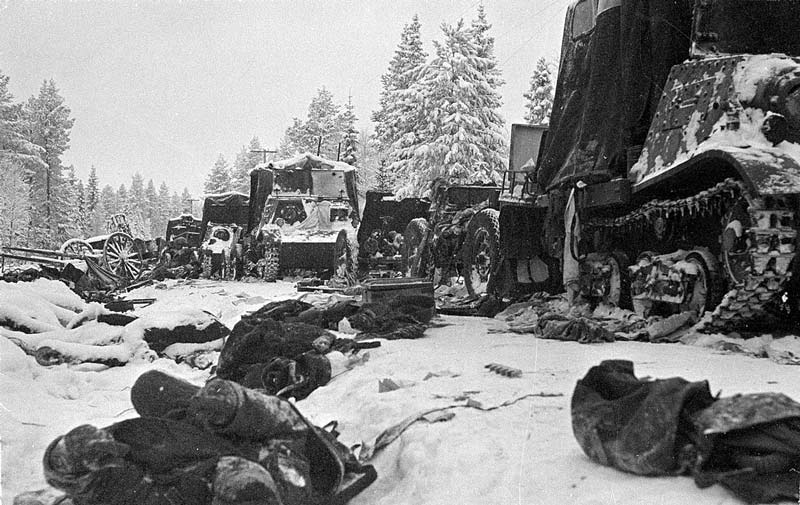
The Molotov cocktail has become a popular weapon among ordinary Ukrainians mounting a resistance against a Russian invasion.[Atlantic Council]
Back in Moscow, Soviet dictator Josef Stalin wanted to trade territories with Finnish President Kyösti Kallio, claiming the security of Leningrad, 32 kilometres from the countries’ border, was at stake.
When Kallio said no, Stalin ordered an invasion. Many historians believe the Georgian revolutionary’s goal was to conquer the entire country, not just select territories.
Finland put up a courageous fight. The Soviets suffered international condemnation, its military was slapped with a disproportionately high number of casualties (5:1) yet, in the end, Stalin walked away with nine per cent of Finland’s territory.
The world has all but forgotten what became known as the Winter War but many are well aware of its most distinct weapon, the Molotov cocktail, or Molotovin koktaili in its original Finnish.
The Molotov cocktail has emerged as a weapon of convenience.
Today, Russian troops are invading Ukraine and the parallels between Vladimir Putin’s unnecessary war and Stalin’s are, well, jarring—Putin’s motives, the price the misadventure is exacting on his army, and the role the glass jars and bottles filled with flammable mixtures and stuffed with cloth wicks are playing in Ukraine’s inspiring resistance.
As Ukrainian citizens walked away from everyday life and took up arms to defend their country alongside soldiers, the Molotov cocktail has emerged as a weapon of convenience, along with the ubiquitous AK-47 assault rifle (a Russian invention.)
The Ukrainian Ministry of Defence urged civilians to produce Molotov cocktails, and a Ukrainian TV channel broadcasted a recipe that included Styrofoam as a thickening agent to help stick the burning liquid to vehicles and other targets.
In the western Ukrainian city of Lviv, the Pravda Brewery stopped making its craft beer and instead filled the empty bottles with Molotov cocktails, sending them to hot spots around the country, including roadblocks and the besieged capital of Kyiv.
The dry-hopped golden ale—and now the deadly cocktail—was appropriately labelled Putin Huilo, which translates as “Putin is a dickhead.”
Brewery owner Yuriy Zastavny said he and his workers consider it their patriotic duty to bring to bear the expertise and experience gained during the 2014 Maidan Revolution, when Ukraine’s citizenry revolted against their authoritarian, pro-Russian president Viktor Yanukovych. He’s been in Russian exile ever since.
“There is a high time in everyone’s life when you have to mobilize yourself to use all your knowledge, all your energy, everything you have lived for and everything you have gained in life to turn it into making the fall of this [Russian] empire possible,” Zastavny told Britain’s Sky News.
“We have put our own money and built on our knowledge of chemistry and our experience…to make good-quality Molotov cocktails.”
Elsewhere, at a former industrial complex that was used as a creative hub and rave space before the invasion, young Ukrainians were operating an improvised Molotov factory, stocked with bottles, some with apple juice labels, and flowery linen squares to be torn into strips and used as fuses.
History student Daniel Mediakovskyi, 20, admitted to The Guardian newspaper a Molotov wouldn’t stop the Russian army, but he stressed “it will break Russian soldiers mentally, and show them they are not welcome here.”
The Finns didn’t invent the Molotov cocktail. That distinction goes to Franco’s Nationalist forces of the 1936-1939 Spanish Civil War, who first used simple petrol bombs against Soviet T-26 tanks. The tanks were supporting Spanish Republicans in a failed assault on the Nationalist stronghold of Seseña.

Pravda Brewery, based in Lviv, has suspended its normal operations in favour of producing Molotov cocktails for the Ukrainian resistance.[Pravda Brewery]
“Do not play with these things,” he added. “They are highly dangerous.”
“When near enough, your pal lights the petrol-soaked corner of the blanket,” he said. “Throw the bottle and blanket as soon as this corner is flaring. See that it drops in front of the tank. The blanket should catch in the tracks or in a cogwheel, or wind itself round an axle.
“The bottle will smash, but the petrol should soak the blanket well enough to make a really healthy fire, which will burn the rubber wheels on which the tank track runs, set fire to the carburetor or frizzle the crew.
“Do not play with these things,” he added. “They are highly dangerous.”
The Finns refined the bomb’s mix, and the tactics used to deploy it, against the same T-26 tanks. They named the weapon after Soviet Foreign Minister Vyacheslav Molotov, a signatory to the Molotov-Ribbentrop Pact.
That August 1939 non-aggression deal between the USSR and Nazi Germany had a secret protocol that defined the two countries’ spheres of influence. The Soviets’ included Finland, which Moscow then invaded three months later.
“The Finns’ policy was to allow the Russian tanks to penetrate their defences, even inducing them to do so by ‘canalising’ them through gaps and concentrating their small arms fire on the infantry following them,” said a June 1940 British War Office report.
“The tanks that penetrated were taken on by gun fire in the open and by small parties of men armed with explosive charges and petrol bombs in the forests and villages.
“The essence of the policy was the separation of the [armoured fighting vehicles] from the infantry, as once on their own the tank has many blind spots and once brought to a stop can be disposed of at leisure.”
The T-26s ran on an air-cooled gas engine and were particularly vulnerable to Molotov cocktails due to some fundamental design flaws.
A Molotov cocktail thrown on the tank’s rear deck would spill burning liquid through the air intakes or grill into the engine compartment. There it would set oil, grease and rubber tubes on fire, creating all the elements needed for an engine explosion.
The crew compartment would fill with smoke, and worse—the fuel could also seep through seams in the armour and ignite inside the vehicle.
The Finnish defenders knocked out almost 2,000 Russian tanks during three-and-a-half months of fighting, an estimated 400 of them by fire alone, primarily started by Molotov cocktails.
The Molotov cocktail made its way into mainstream military units and wars of resistance.
“Subsequent tank designs make them much harder targets,” technology journalist David Hambling wrote for Forbes on March 2. “Later tanks had water-cooled diesel engines that were much harder to get burning fuel into, and diesel is less prone to explode.
“With no connection between crew and engine compartments and better protection for the crew, tanks like the Russian T-34 could not be destroyed or halted so easily.”
Still, the Molotov cocktail made its way into mainstream military units and wars of resistance. It was a base weapon for Britain’s Home Guard after France fell to Hitler’s forces and the British Isles expected an amphibious invasion early in the Second World War.

A Canadian soldier throws a Molotov cocktail during exercises.[Wikipedia]
“There are many villages like that. Out of the top windows is the place to drop these things on the tank as it passes the block. It may only stop it for two minutes there, but it will be quite effective.”
Molotov cocktails were used widely by Polish and Norwegian troops during the Second World War. Even the U.S. Marine Corps developed a version using nitric acid and a lump of metallic sodium to ignite a gasoline/diesel fuel mix. The Marines used them to clear houses as recently as the Second Battle of Fallujah in Iraq in 2004—“one part liquid laundry detergent, two parts gas.”
They were also long a favourite weapon of the Irish Republican Army; and when Taliban fighters weren’t setting off roadside bombs, they used Molotov cocktails to some success in Afghanistan.
During the Winter War, Molotov cocktails were eventually mass-produced by the Alko corporation at its Rajamäki distillery in southern Finland, 45 kilometres from Helsinki. The bottled mixture of 750 millilitres of ethanol, tar and gasoline was bundled with matches. Production totalled 450,000.
As with Russians in present-day Ukraine, the Soviets entered Finland with superior military strength but suffered severe losses and initially made little headway. The League of Nations deemed the attack illegal and expelled the USSR from its ranks.
The war ended in March 1940 with between 321,000 and 381,000 Soviet casualties, including up to 167,976 Red Army troops dead or missing. The Finns suffered 70,000 casualties, 25,904 of them KIA or MIA.

Dead Soviet soldiers and their equipment after they were encircled at the Battle of Raate Road during the Winter War.[Wikipedia]
At the basement bomb factory near Lviv, Guardian correspondent Luke Harding reported that the air was pungent with the aroma of petrol and paint remover, polystyrene and silver dust.
“We call them Bandera smoothies,” said Lily Eleanor, a 25-year-old public relations agent who, within days of Russian troops entering Ukraine on Feb. 24, left her job in the fashion industry and was making the bombs. (Stepan Bandera was a wartime nationalist leader in Ukraine.)
“I love the smell,” she said. “It’s the smell of freedom.”
Advertisement





















